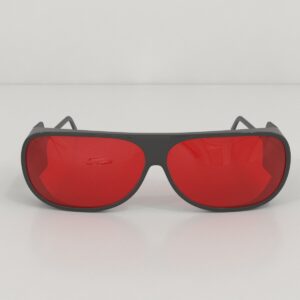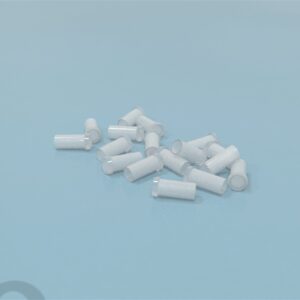$1,090.00

MazeEngineers empowers preclinical neuroscience research with meticulously designed, customizable behavioral apparatuses. From manual classic mazes to fully automated smart systems, we provide the tools scientists need to capture high-quality, reproducible data for studies on learning, memory, anxiety, and depression.



Features |
25 cm long; 8 cm wide and 15 cm high |

The Y-shaped maze consists of a transparent acrylic tank with dimensions designed as follows: the starting arm measures 18 cm in length and 10 cm in width, while each of the goal arms extends to 30 cm in length and 5 cm in width. The entire structure stands at a height of 20 cm. All three arms are fitted with 1 cm diameter polyethylene tubing at their intake (goal arms) and outflow (start arm) openings. To regulate and measure fluid flow rates, a flow meter is positioned at the intake opening. The inflow of fluid is achieved through the use of elevated water cylinders (utilizing gravity), which are connected to the tubing system.
The experimental subjects should be housed in tanks that are consistently maintained at a stable temperature and pH level. These environmental conditions should be rigorously upheld throughout the experimental sessions to ensure the well-being and minimize stress for the fish. Adequate aeration of the water and maintaining its quality at optimal levels are equally crucial.
The Y-Maze experimental tank should be filled with water up to a depth of 7 cm to ensure minimal stress on the fish during trials. Position the Y-Maze tank inside a 50 cm tall opaque plastic enclosure placed on Styrofoam sheets to eliminate external visual cues and vibrations. Illuminate the tank from above for clear observation. For automated tracking and video recording of fish behaviors and movements, utilize specialized software like Noldus Ethovision XT installed on a ceiling-mounted system above the tank.
Between each experimental subject, ensure thorough emptying and rinsing of the tank to maintain cleanliness and eliminate residual influences.
The subjects are to undergo individual exposure to the maze for a duration of 10 minutes each day over a period of 3 consecutive days. To commence the behavioral testing, position the subject behind a mesh sliding door located at the start arm of the maze. The subject should be released into the maze within a 30-second timeframe, coinciding with the initiation of water flow. Testing should conclude after a duration of 5 minutes, following which the subject is promptly returned to its original tank habitat.
In assessing preferences and avoidance using the Y-Maze, subjects underwent testing involving both positive and aversive stimuli across separate experiments. The positive stimulus consisted of a tank containing conspecific shoals, matched in size and weight to the subjects, positioned adjacent to one goal arm wall. Denatonium benzoate served as the aversive stimulus, administered at a concentration of 2.5nM with a maintained flow rate of 0.4 cm/sec.
Subjects were divided into experimental and control groups for both conditions. Results indicated that subjects spent significantly more time in the arm adjacent to the shoal-containing tank compared to when no shoals were present. Conversely, in the aversive stimulus experiment, subjects displayed a preference for the freshwater arm over the arm containing denatonium benzoate, spending more time than expected by chance (Grella et al., 2010).
During the experiment, one arm of the maze dispensed 0.85% alcohol while the other arm dispensed fresh water, with a consistent flow rate of 3 cm/sec maintained throughout. Compared to the other groups, the acutely treated group exhibited reduced time spent in the alcohol arm, decreased activity levels, and increased periods of immobility. However, the study did not establish a clear preference for alcohol among any of the treatment groups (Grella et al., 2010).
The following data can be observed in the flow-through Y-Maze tasks,
The performance of subjects in the flow-through Y-Maze may be influenced by external disturbances such as noise, vibrations, and visual stimuli. Additionally, the handling and habituation procedures can significantly impact maze performance. It is crucial to maintain an optimal flow rate that ensures subjects are not overwhelmed and prevents the inadvertent mixing of water-soluble stimuli between the goal arms.
Grella, S. L, Kapur, N., & Gerlai, R. (2010). A Y-maze Choice Task Fails to Detect Alcohol Avoidance or Alcohol Preference in Zebrafish. International Journal of Comparative Psychology, 23(1)
There are no questions yet. Be the first to ask a question about this product.